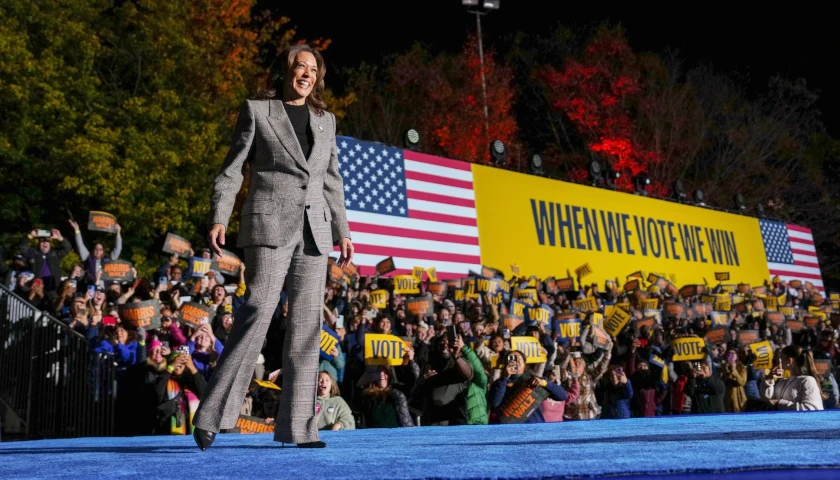by James D. Agresti
Democratic Congresswoman Alexandria Ocasio-Cortez recently gave an impassioned pitch for her “Green New Deal” on the floor of the U.S. House of Representatives. After stating that her opponents were misrepresenting the legislation, she read the full text of it into the Congressional Record and claimed that the reason it is “so, so controversial” is “because for years we have prioritized the pursuit of profit at any and all human and environmental cost.”
That statement, along with the actual text of her bill, are at odds with numerous facts about pollution, regulations, and the economics of energy.
Environmental Trends
Contrary to AOC’s allegation that the U.S. doesn’t prioritize the environment, the nation’s air has become significantly cleaner over the past 40 years. Under federal law, the EPA monitors the outdoor concentrations of six major “criteria pollutants” that are widespread and likely “to endanger public health or welfare.” According to the latest and earliest primary measures of these pollutants, the average U.S. outdoor levels of:
- carbon monoxide declined by 84% from 1980 through 2017.
- ozone declined by 32% from 1980 through 2017.
- lead declined by 99% from 1980 through 2017.
- nitrogen dioxide declined by 60% from 1980 through 2017.
- 10 micron particulate matter declined by 34% from 1990 through 2017.
- 2.5 micron particulate matter declined by 41% from 2000 through 2017.
- sulfur dioxide decreased by 90% from 1980 through 2017.
Beyond criteria pollutants, the EPA estimates the emissions of 187 hazardous air pollutants, which are those that present “a threat of adverse human health effects” like cancer and birth defects. Combined emissions of these substances have declined by about 50% since the earliest available data, which stretches back to the 1990s.
Outdoor hazardous air pollutant levels have become so minimal that the EPA estimates they increase the average risk of cancer over a 70-year-lifetime by 0.004 percentage points. For comparison, the average lifetime risk of developing cancer is 38% for women and 40% for men.
Yet in accord with misinformation spread by politicians, educators, journalists, fact checkers, and environmental activists, 41% of voters believe that the air in the United States is now more polluted than it was in the 1980s. This includes 52% of people who plan to vote for a Democratic president in November and 28% of people who plan to vote for Trump.
Regulations
Also contradicting AOC, the U.S. has been enacting reams of energy-related environmental laws and regulations for decades. As the U.S. Department of Energy reported in 1992, “the effort to deal with environmental concerns has become a central feature of federal energy policy,” and “there are so many government regulations concerning energy that it is difficult to identify and analyze all of them.”
Since then, the Clinton, Bush, and Obama administrations, along with Congress, have added considerably to these laws and regulations. For one of countless examples of how they have manifested, a 2012 Government Accountability Office report “identified 679 renewable energy-related initiatives” in the federal government. For another example, Oak Ridge National Laboratory reported in 2010 that regulatory costs for hydropower “have increased six times over the past thirty years.”
Consumers
Another delusive aspect of AOC’s statement is her finger-pointing at “the pursuit of profit.” In reality, ordinary people—not corporations—are the main beneficiaries of the low-cost, abundant energy that characterizes the U.S. energy market. As explained in the textbook Introduction to Air Pollution Science, “The availability of affordable electric power is essential for public health and economic prosperity.” A diverse array of other scholarly publications make the same basic point, noting that high energy prices drive up hunger, drive down wages, stoke unemployment, and harm people in a wide variety of other ways.
A simple fact of economics is that consumers “prefer a lower price and sellers prefer a higher price.” Yet, regulations and subsidies like those required to implement the Green New Deal raise energy costs. This harms consumers while increasing the revenues of corporations. Such policies have already guaranteed corporations double-digit profits on certain energy projects and supplied them with funds for executive bonuses.
In Germany, where government is more aggressive than the U.S. in forcing the use of renewable energy, the average price of household electricity is about three times that of the United States. Yet, Germany is still nowhere close to the Green New Deal’s mandate of “meeting 100 percent of the power demand in the United States through clean, renewable, and zero-emission energy sources.” In 2018, wind and solar provided 24% of the Germany’s electricity, compared to 9% in the United States. Those percentages are not for the nations’ total energy—just their electricity.
The costs of getting to AOC’s 100% figure would be multiplicatively greater than the three-fold premium paid by German households. This is because when wind and solar generation increase, so do the costs of backing them up for the inevitable times when the sun isn’t shining or the wind isn’t blowing. Per the Institute for Plasma Physics in the Netherlands:
If the share of wind and solar power grow, great care has to be taken to guarantee the stability of the electricity supply. In most cases, back-up systems fueled by fossil fuels will be necessary.
[W]ind and solar energy are so-called intermittent sources of energy, meaning that they do not deliver energy all the time. This means that you need back-up power, or a means of storing power for times when there is no sun or wind, which adds to the costs of these energy sources.
Zero Emissions Fantasy
The Green New Deal also demands the use of imaginary products, as there is no such thing as the “zero-emission energy sources” that it requires. Though solar and wind create no pollution while they are in use, that is not true of their manufacturing and disposal. As detailed in the journal Environmental Science & Technology, “all” manmade “means of generating energy, including solar electric, create pollutants when their entire life cycle is taken into account. Life-cycle emissions result from using fossil-fuel-based energy to produce the materials for solar cells, modules, and systems, as well as directly from smelting, production, and manufacturing facilities.”
Wind and solar create far less pollutants than fossil fuels, but their environmental benefits are mitigated by the fact their high costs drive people to burn more wood and other fuels in fires and home stoves. These don’t burn fuel as efficiently as commercial energy technologies, and hence, they produce elevated levels of outdoor and indoor pollutants. The added consumption of wood also causes deforestation. Hence, the German newspaper Der Spiegel reported in 2013:
- “With energy costs escalating, more Germans are turning to wood burning stoves for heat.”
- “The number of Germans buying heating devices that burn wood and coal has grown steadily since 2005,” which has “boosted prices for wood, leading many to fuel their fires with theft.”
- “About 10 percent of the firewood that comes out of Brandenburg’s forest every year is stolen….”
Workers
While ignoring the harmful effects that high energy prices inflict on the vast majority of people, the Green New Deal promises to “create millions of good, high-wage jobs and ensure prosperity and economic security for all people of the United States.” In truth, “green job” policies mainly benefit corporations, not workers. As documented in the book Environmental and Natural Resource Economics: An Encyclopedia, “Growth in the green jobs sector does not necessarily imply net job creation” or economic progress for the following reasons:
- It is “easy to promote job growth in a given activity by simply encouraging (subsidizing) inefficient technologies that are more costly. We could, for example, use picks and shovels to dig for oil,” but this would reduce the nation’s productivity, which is the primary driver of people’s living standards.
- “The end product of a solar array or a wind farm is” electricity output. “Thus, increasing the amount of” output “produced from alternative energy or green energy sources reduces” the output and jobs “that would have been produced from fossil fuels.” Hence, “net job creation may be zero (or negative).”
- “Given the capital-intensive nature of energy development (green or fossil fuels), it is unlikely that this sector would produce as many direct jobs as alternative uses of government support. The benefits would largely accrue to the owners of capital [i.e., business owners].”
– – –
James D. Agresti is the president of Just Facts, a think tank dedicated to publishing rigorously documented facts about public policy issues.
Photos by Senate Democrats. CC BY 2.0.





